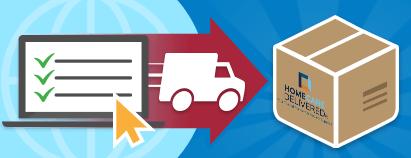Idaho Medicaid & Incontinence Supplies
This post was reviewed by our Director of Clinical Excellence and Oversight.
Are you an Idaho Medicaid recipient who needs incontinence supplies? If so, we have good news for you: Idaho Medicaid covers the cost of incontinence products.
Does Idaho Medicaid Cover Incontinence Supplies?
Yes, Idaho Medicaid is one of many states that offer coverage of incontinence supplies. Eligible members can get products like adult diapers, bladder control pads, and pull-on underwear delivered at little to no cost.

Idaho Coverage Requirements
Idaho Medicaid only covers incontinence supplies that are medically necessary. That means a doctor or qualified health professional must confirm the products are needed to treat incontinence. Idaho Medicaid may also require pre-authorization of the products before you can receive them.
Idaho Medicaid Incontinence Coverage Details
Idaho Medicaid provides benefits through Fee-For-Service.
Types of Benefit:
Requirements/Restrictions:
- A qualified medical professional must confirm that the supplies are medically necessary
- Product coverage is not available for children under age 4
- Pre-authorization of products may be required
HCD is can provide supplies to Fee-For-Service Customers!
How to Get Supplies
First, you need to visit a doctor and get a diagnosis for incontinence. Only a diagnosis from a doctor confirms that the products are medically necessary. Once a doctor has diagnosed the incontinence, you may be eligible to get products with your benefits.
- Provide your information by phone or sign up online
- We’ll contact your doctor and complete the paperwork required by Medicaid
- Once complete, you’ll get incontinence supplies delivered to you each month
It only takes about 10 minutes to sign up. Just be sure to have your doctor’s information and insurance card. No credit card is required.

To learn about other state Medicaid plans, visit our State Medicaid Coverage Guide of Incontinence Supplies.
Get Incontinence Supplies Online With Medicaid
No Credit Card | Fast Delivery | 100% Discreet

Disclaimer:
Unless otherwise noted, the recommendations in this document were obtained from the sources indicated. Be advised that information contained herein is intended to serve as a useful reference for informational purposes only. HCD cannot be held responsible for the continued accuracy of or for any errors or omissions in the information. All trademarks and registered trademarks are the property of their respective owners.
